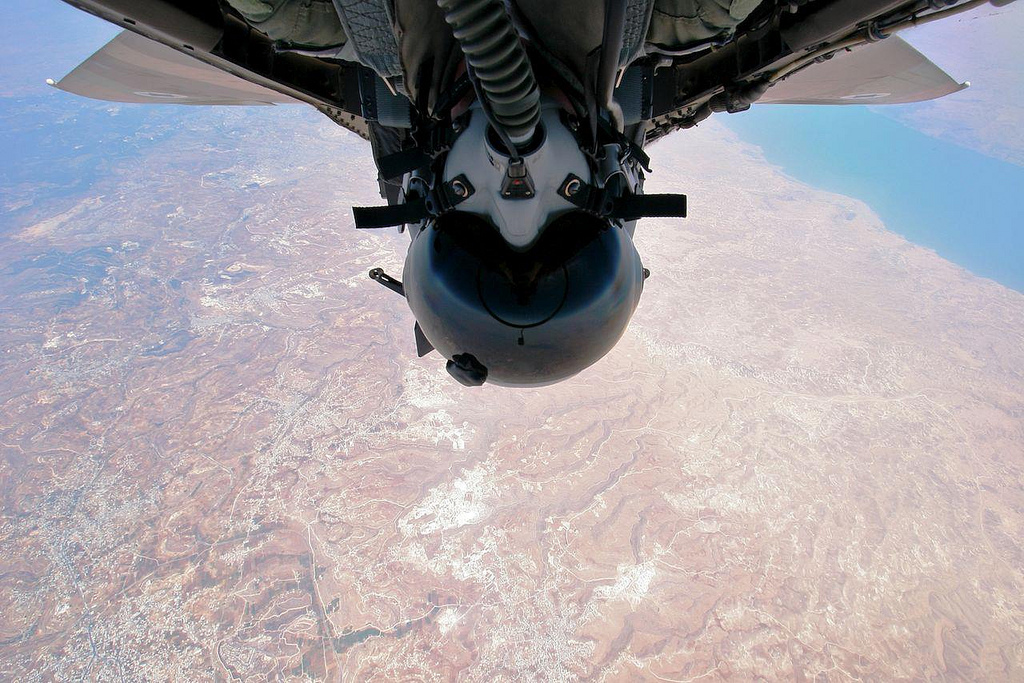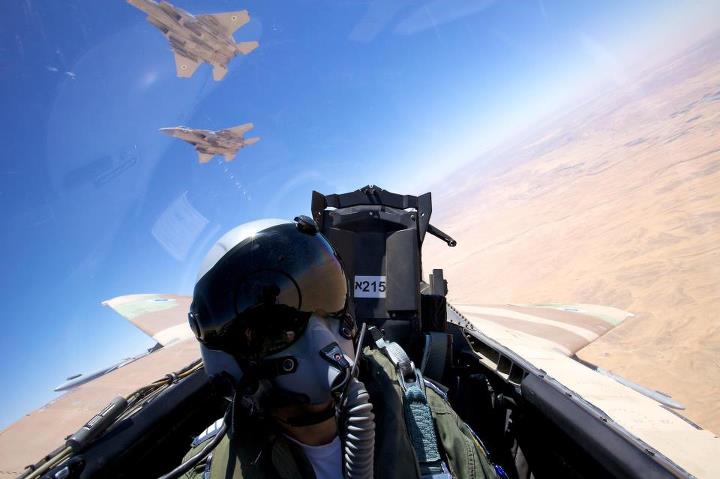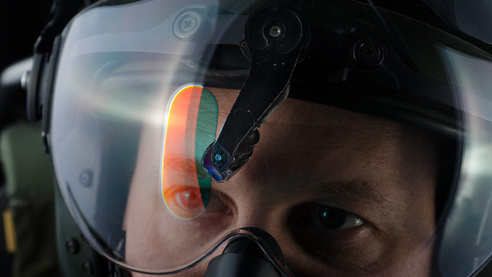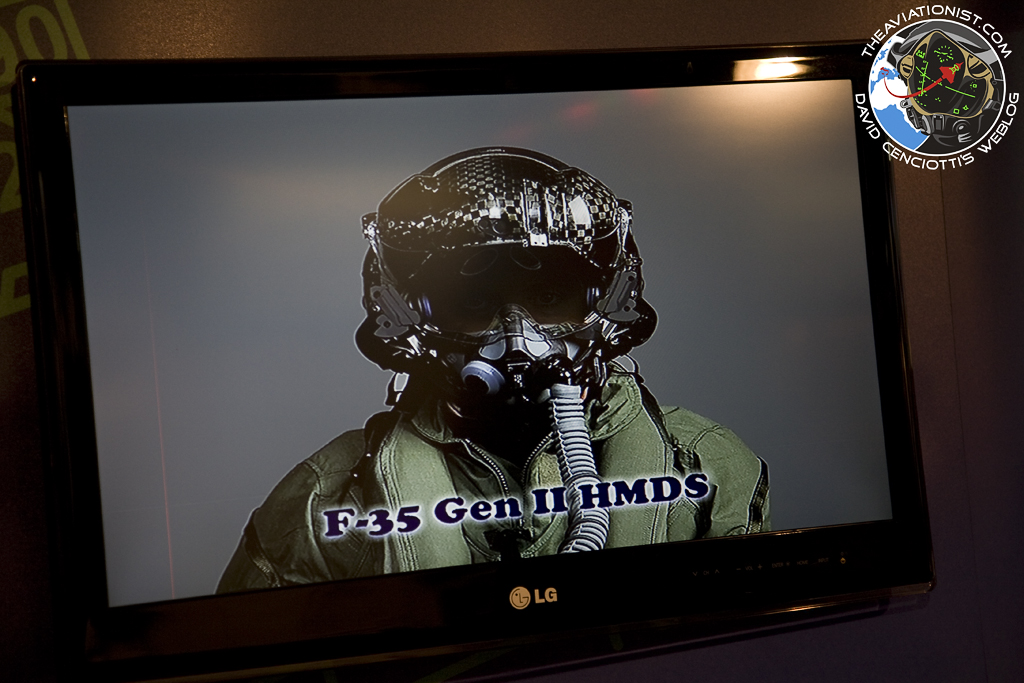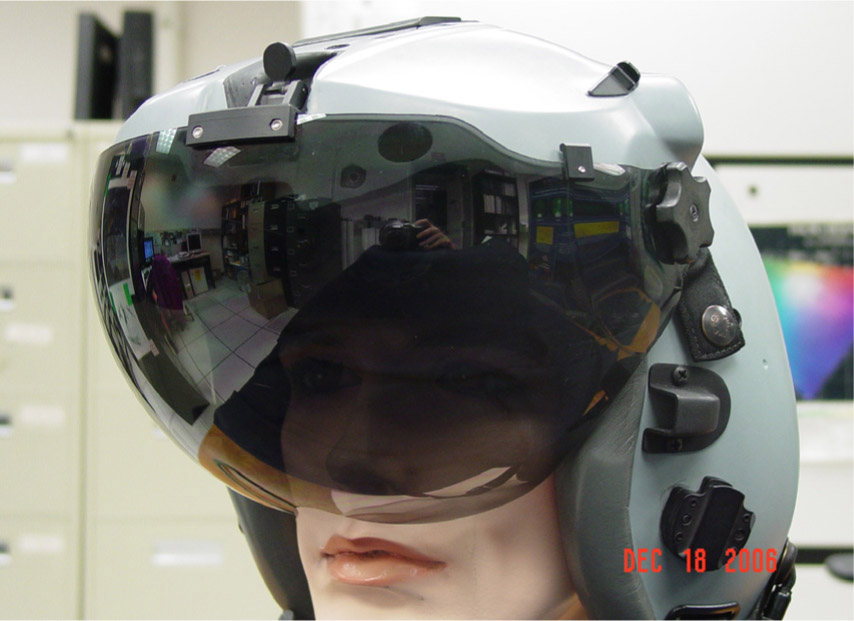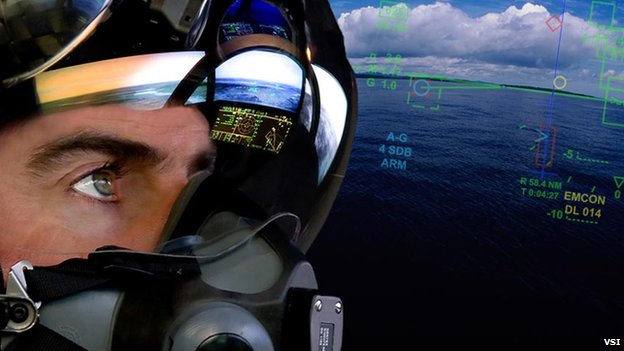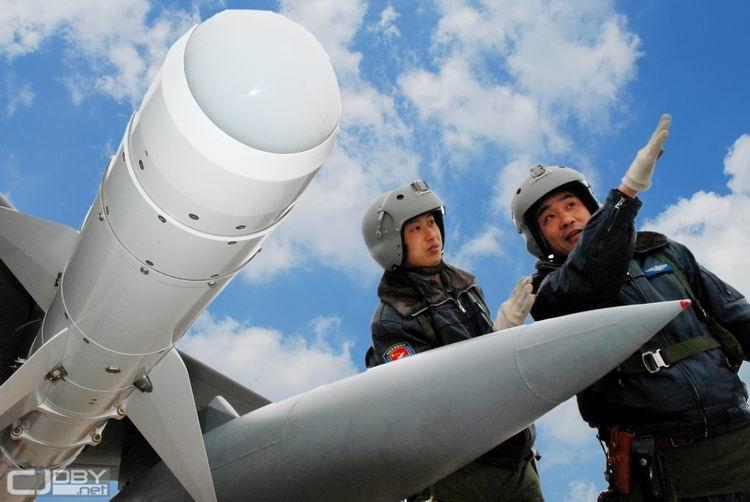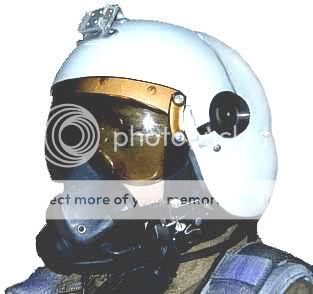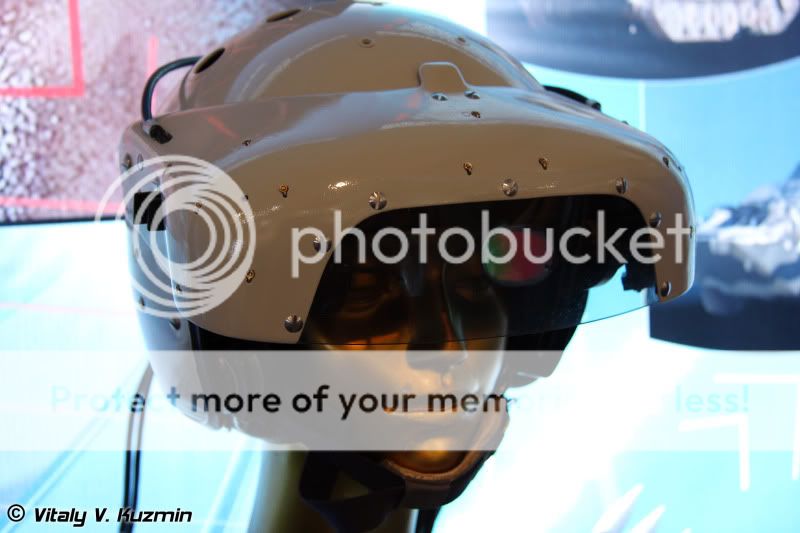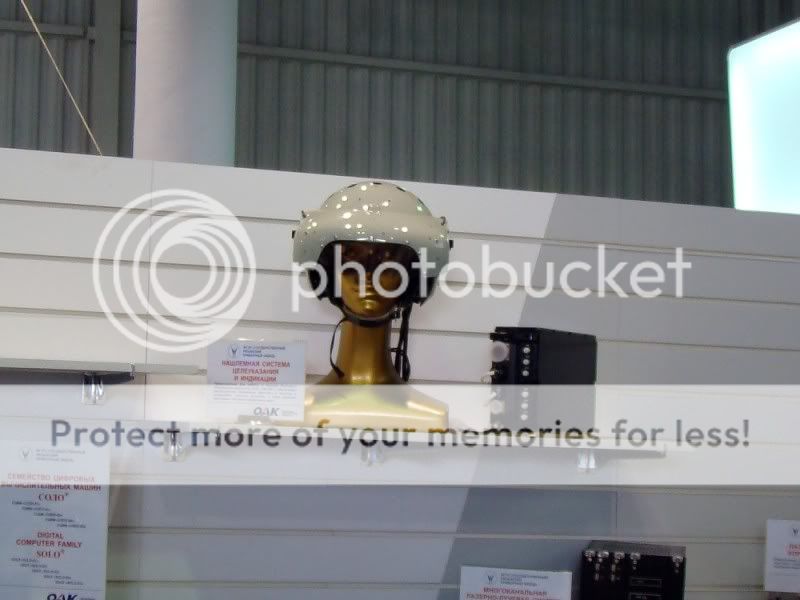IHK_PK
FULL MEMBER

- Joined
- Nov 16, 2010
- Messages
- 360
- Reaction score
- -3
- Country
- Location
BAE's Striker helmet gives fighter pilots 'X-ray vision'
By Katia Moskvitch of BBC UK.
When a pilot in a Euro fighter Typhoon jet glances down, he doesn't see a steel-grey floor. Instead he sees clouds and maybe sheep and cows in green fields below.
If he were to spot an enemy down there, or anywhere near the aircraft, he would not need to point the plane towards the target.He would simply look at it - through the solid hull of the plane - make sure that a tiny symbol displayed on his helmet's visor was aligned with the object, press a button and fire. The pilot is wearing BAE Systems' Striker HMSS helmet, the UK defence company's latest development. Putting augmented reality technology - as used in video games - to military use is the latest goal for helmet makers around the world.
The plane's sensors provide the pilot with X-ray vision-like imagery
David CenciottiFormer Italian Air Force officer, says.
Cameras all around the aircraft are wirelessly linked to BAE's helmet; the system checks in which direction the pilot is looking, and then displays the exact view on the visor, in real time. Striker incorporates a helmet-mounted display (HMD), designed to help the pilot communicate with the plane. HMD is a step forward from the so-called head-up displays (HUD) - the transparent screens in front of the pilot that first appeared in the 1970s. They show key data, such as the altitude, speed and direction, allowing pilots to keep their eyes on the view ahead instead of constantly looking down to check their instruments. HUDs also display targets - but to aim, the pilot has to maneuver the aircraft accordingly. The military around the world started using HMDs in the 1990s; nowadays, they are becoming more and more advanced.
Helmet-mounted displays made by a US company VSI are also among the most advanced, providing the pilot with X-ray-like vision
"If a pilot wears a Striker helmet - which is essentially a helmet with an integrated display - when he sees something on the ground he can just turn his head, put a symbol across on to the point of interest, press a button, and the system will calculate the object's co-ordinates," says Alan Jowett of BAE Systems. With a helmet-mounted display, you could actually control a UAV equipped with weapons from the jet Peter Robbie EADS.
"The aircraft can then turn its sensors, cameras or weapons in that direction - so it allows a dialogue directly between the plane and the pilot."
Night vision
Pilots from a number of countries routinely wear Striker HMSS on training exercises but it has not yet been used in combat. BAE Systems says its helmet is the most advanced in the world but there are other companies which can make a claim to that title. California-based Vision Systems International (VSI) has created a helmet-mounted display called HMDS Gen II, specifically designed for the F-35 Joint Strike Fighter stealth jet, which is currently under development. The plane has been designed without a head-up display, so getting the right MD is paramount. Like Striker, HMDS Gen II integrates infrared imaging, night vision and a virtual HUD, showing data right in front of the pilot's eyes.
BAE Systems' Striker helmet has been designed to help the pilot communicate with the fighter jet
"All of the plane's sensors along with a set of cameras mounted on the jet's outer surfaces feed the system, providing the pilot with X-ray vision-like imagery," says David Cenciotti, a military aviation journalist and former Italian Air Force officer. Says, In real life, there is simply no reset button. Andrew BrookesRetired RAF pilot says, "He can see in all directions, and through any surface, with all the information needed to fly the plane and to cue weapons projected on to the visor." "The most used helmet-mounted display in the world is JHMCS, also made by VSI."
Playing the game
In future, full-display helmets could lead to the deployment of unmanned drones from the sky, says Peter Robbie, vice-president of business development at European aerospace and defence firm EADS. "If you're flying a fighter plane with a helmet-mounted display, you could actually control a UAV [unmanned aerial vehicle] equipped with weapons from the jet," he says.
Alan Jowett of BAE Systems explains how the Striker generation of helmets is tested
"The UAV would be an additional weapons carrier, and the pilot could pass targeting information to it. "So if he sees a target, by pressing a button it would become the unmanned vehicle's target. The pilot could authorise it to drop a missile and then monitor through his helmet where it is going to go. "This type of monitoring already happens now - the pilot has a laser pointed on to the target, and it is what the weapon goes after. If at the last minute he sees, for instance, an ambulance turn up, he can make the weapon miss the target." Such developments, along with the pinpoint accuracy of missiles on a modern aeroplane, could help save lives by reducing collateral damage. But one retired RAF pilot says that adopting too much technology worries him. "The biggest computer in my day, in the 1970s and 1980s, was the human brain. Now the human brain is in the business of managing all the data the plane is feeding to it," says Andrew Brookes, a former wing commander. The F-35 has been designed without a head-up display
"You're not flying - the computer does the flying. You just sit in an armchair, so to speak, and manage the battle space, manage all the inputs that are coming around from miles away, and a lot of it is fused under the screen in the helmet in front of your eyes. "And while the precision power is awesome, and the intelligence-gathering capability is awesome, you become an all-seeing being in the sky. "That's frightening when you think about it - as everything becomes more technological, there's less and less of the human flying element, and some people may not realise they are making a transition from a video game in their living room to a big video game in a conflict.
"And in real life, there is simply no reset button."

By Katia Moskvitch of BBC UK.
When a pilot in a Euro fighter Typhoon jet glances down, he doesn't see a steel-grey floor. Instead he sees clouds and maybe sheep and cows in green fields below.
If he were to spot an enemy down there, or anywhere near the aircraft, he would not need to point the plane towards the target.He would simply look at it - through the solid hull of the plane - make sure that a tiny symbol displayed on his helmet's visor was aligned with the object, press a button and fire. The pilot is wearing BAE Systems' Striker HMSS helmet, the UK defence company's latest development. Putting augmented reality technology - as used in video games - to military use is the latest goal for helmet makers around the world.
The plane's sensors provide the pilot with X-ray vision-like imagery
David CenciottiFormer Italian Air Force officer, says.
Cameras all around the aircraft are wirelessly linked to BAE's helmet; the system checks in which direction the pilot is looking, and then displays the exact view on the visor, in real time. Striker incorporates a helmet-mounted display (HMD), designed to help the pilot communicate with the plane. HMD is a step forward from the so-called head-up displays (HUD) - the transparent screens in front of the pilot that first appeared in the 1970s. They show key data, such as the altitude, speed and direction, allowing pilots to keep their eyes on the view ahead instead of constantly looking down to check their instruments. HUDs also display targets - but to aim, the pilot has to maneuver the aircraft accordingly. The military around the world started using HMDs in the 1990s; nowadays, they are becoming more and more advanced.
Helmet-mounted displays made by a US company VSI are also among the most advanced, providing the pilot with X-ray-like vision
"If a pilot wears a Striker helmet - which is essentially a helmet with an integrated display - when he sees something on the ground he can just turn his head, put a symbol across on to the point of interest, press a button, and the system will calculate the object's co-ordinates," says Alan Jowett of BAE Systems. With a helmet-mounted display, you could actually control a UAV equipped with weapons from the jet Peter Robbie EADS.
"The aircraft can then turn its sensors, cameras or weapons in that direction - so it allows a dialogue directly between the plane and the pilot."
Night vision
Pilots from a number of countries routinely wear Striker HMSS on training exercises but it has not yet been used in combat. BAE Systems says its helmet is the most advanced in the world but there are other companies which can make a claim to that title. California-based Vision Systems International (VSI) has created a helmet-mounted display called HMDS Gen II, specifically designed for the F-35 Joint Strike Fighter stealth jet, which is currently under development. The plane has been designed without a head-up display, so getting the right MD is paramount. Like Striker, HMDS Gen II integrates infrared imaging, night vision and a virtual HUD, showing data right in front of the pilot's eyes.
BAE Systems' Striker helmet has been designed to help the pilot communicate with the fighter jet
"All of the plane's sensors along with a set of cameras mounted on the jet's outer surfaces feed the system, providing the pilot with X-ray vision-like imagery," says David Cenciotti, a military aviation journalist and former Italian Air Force officer. Says, In real life, there is simply no reset button. Andrew BrookesRetired RAF pilot says, "He can see in all directions, and through any surface, with all the information needed to fly the plane and to cue weapons projected on to the visor." "The most used helmet-mounted display in the world is JHMCS, also made by VSI."
Playing the game
In future, full-display helmets could lead to the deployment of unmanned drones from the sky, says Peter Robbie, vice-president of business development at European aerospace and defence firm EADS. "If you're flying a fighter plane with a helmet-mounted display, you could actually control a UAV [unmanned aerial vehicle] equipped with weapons from the jet," he says.
Alan Jowett of BAE Systems explains how the Striker generation of helmets is tested
"The UAV would be an additional weapons carrier, and the pilot could pass targeting information to it. "So if he sees a target, by pressing a button it would become the unmanned vehicle's target. The pilot could authorise it to drop a missile and then monitor through his helmet where it is going to go. "This type of monitoring already happens now - the pilot has a laser pointed on to the target, and it is what the weapon goes after. If at the last minute he sees, for instance, an ambulance turn up, he can make the weapon miss the target." Such developments, along with the pinpoint accuracy of missiles on a modern aeroplane, could help save lives by reducing collateral damage. But one retired RAF pilot says that adopting too much technology worries him. "The biggest computer in my day, in the 1970s and 1980s, was the human brain. Now the human brain is in the business of managing all the data the plane is feeding to it," says Andrew Brookes, a former wing commander. The F-35 has been designed without a head-up display
"You're not flying - the computer does the flying. You just sit in an armchair, so to speak, and manage the battle space, manage all the inputs that are coming around from miles away, and a lot of it is fused under the screen in the helmet in front of your eyes. "And while the precision power is awesome, and the intelligence-gathering capability is awesome, you become an all-seeing being in the sky. "That's frightening when you think about it - as everything becomes more technological, there's less and less of the human flying element, and some people may not realise they are making a transition from a video game in their living room to a big video game in a conflict.
"And in real life, there is simply no reset button."
posted By ***_PK @ Kharian Cantt, Pakistan.



